

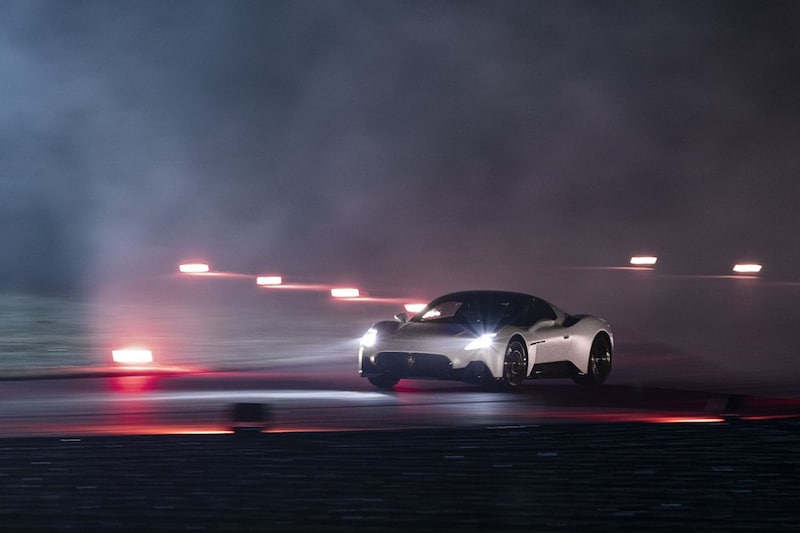
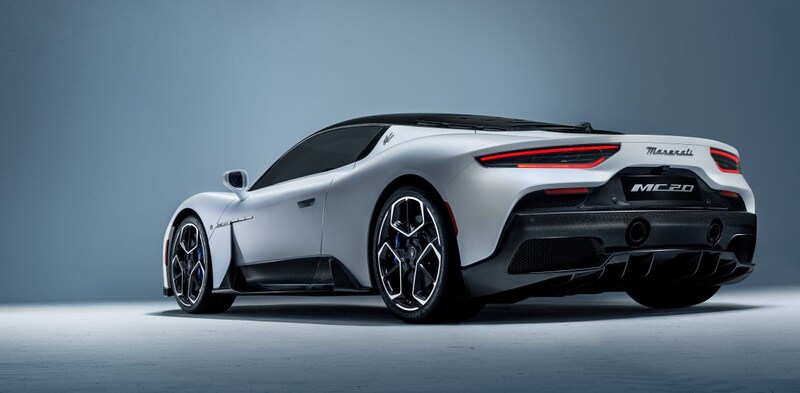
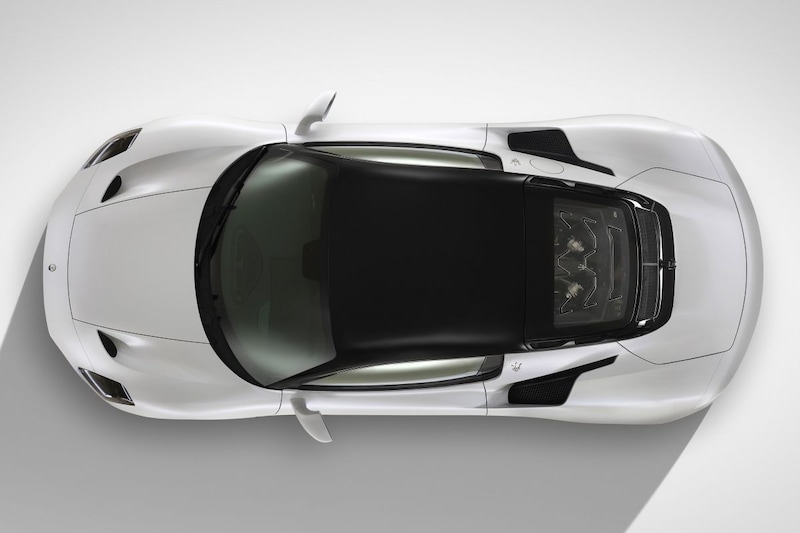



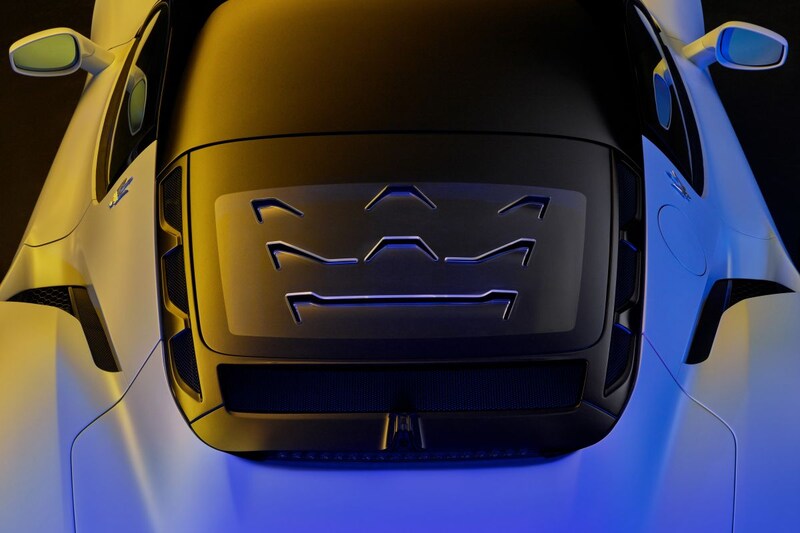

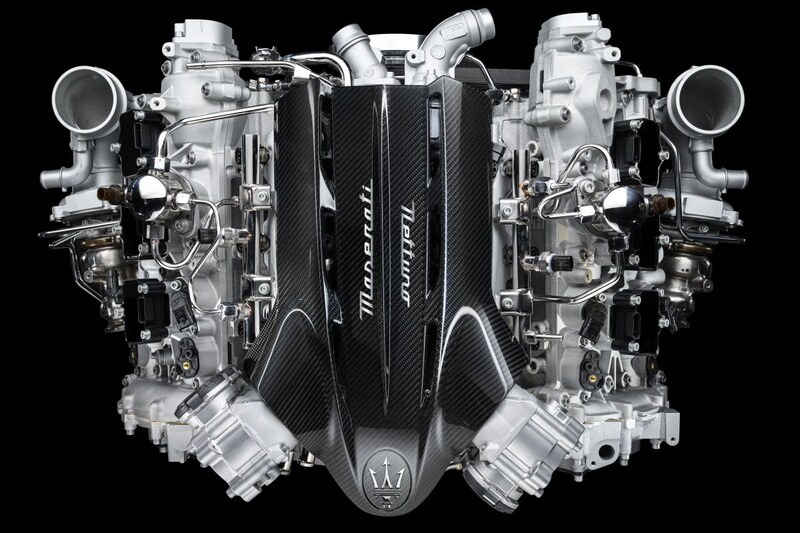
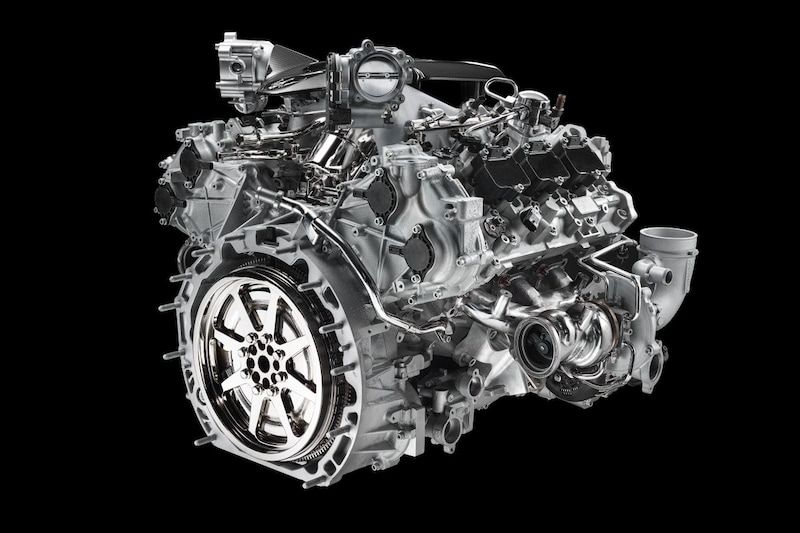
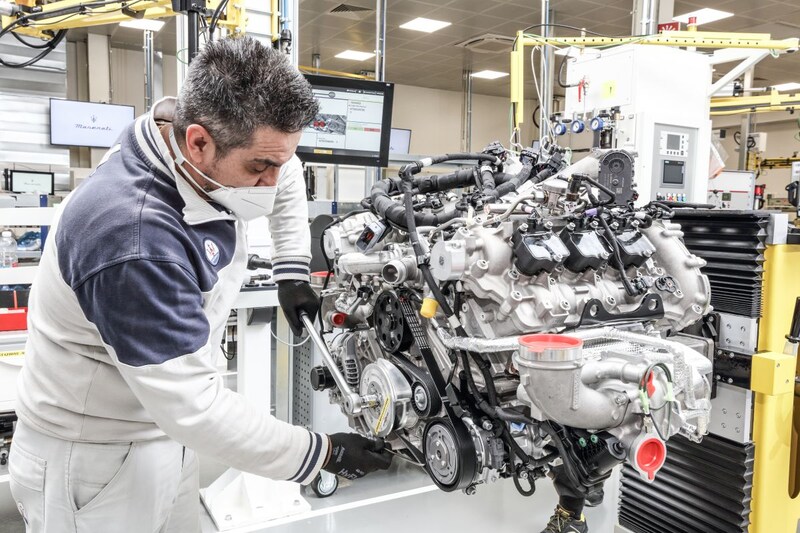
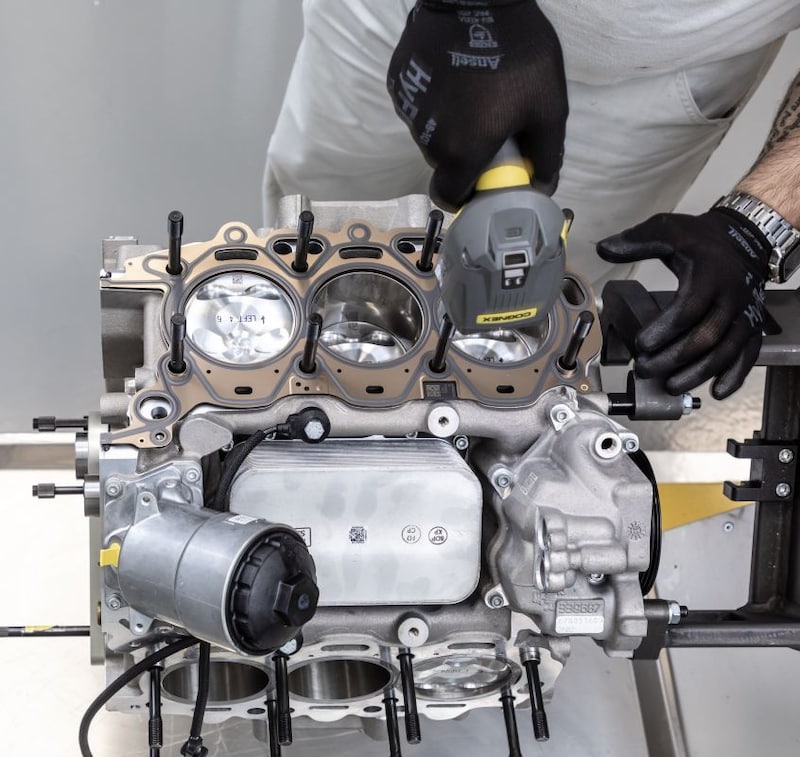
The days of the internal combustion engine seem numbered. Even in super sports cars, the electric motor is getting more and more foot in the door. But … when the need is greatest, rescue is near. The automotive industry continues to develop technology that can avert, or at least postpone, the retirement of the gasoline engine. Fortunately. This time it’s Maserati that takes the ignition to the next level with Formula 1 technology for more performance, without having to deal with the regulations. Here you can read everything about the new V6 of the Maserati MC20, the Nettuno.
Whether it’s a rearguard fight for a bunch of diehards petrol heads or not, in the perpetual split between performance on the one hand and regulation on the other, this time it’s Maserati that begins a new chapter. The engineers from Modena let the completely new three-litre V6 in the back of the Maserati MC20 perform like a four-litre V8 using Formula 1 technology, while reducing emissions and consumption even further. With its 90° block angle, dry-sump lubrication system, twin turbos and both direct and indirect injection per cylinder, the Nettuno engine is already quite a special machine. But what really matters here is the pre-chamber ignition, state-of-the-art technology that Ferrari uses in its Formula 1 engines, for example, and with which the combustion engine phenomenon does not have to be scrapped by a long way, but goes to the next level.
Compress
The intended power jump starts with the compression of the mixture. We are mainly talking about the compression ratio of the engine. This is the fixed ratio between the space above the piston when that piston is all the way down (at bottom dead center) and the space above the piston when the piston is all the way up (at top dead center). This ratio indicates the extent to which the aspirated air or mixture is compressed. The more a gas is compressed, the more it will expand again. In other words: the higher the compression ratio, the nicer it is. With Maserati’s Nettuno, the compression ratio is over 15 percent higher than what we usually see. The thermal efficiency is directly dependent on the compression ratio; a higher compression ratio provides a better efficiency, in other words more performance from the same drop of petrol or equal performance with less petrol. So why wasn’t the compression ratio increased a lot earlier?
In practice, it appears that you cannot increase the compression ratio indefinitely. When the pressure becomes too high, there is a risk of ‘knocking’, which is the spontaneous combustion of the mixture. And that is undesirable. As a constructor, you want the mixture to ignite completely as a result of the spark from the spark plug: the first bit of mixture is ignited by the spark plug, after which the resulting flame front passes through the cylinder to ignite the rest of the mixture. This provides the highest efficiency, is most comfortable and ensures a longer engine life. When the first fuel particles start to burn, the pressure in the cylinder increases. That is also the intention, because the piston has to be pressed down. If the compression ratio is too high, the increased pressure of the fuel particles that burn first will cause high pressure peaks, so that parts of the mixture elsewhere in the cylinder will start to ignite spontaneously as a result of those pressure waves – i.e. before the flame front is close. is. This uncontrolled combustion is called detonation, knocking or knocking (named after the sound it accompanies) and can cause extreme peak pressures, which can damage the piston bottom and cylinder wall as well as the gearing, including the bearings.
fire rays
In order to increase performance using a higher compression ratio, a ruse must be found to prevent the engine from pinging. The limiting factor is the too slow combustion or the start of ignition of the mixture too concentrated in one place. Maserati has therefore looked for a better spread flame front, which moves faster through the combustion chamber and gives the mixture no chance to detonate. They do this with the help of an extra space in the cylinder head, a pre-chamber. Simply put, the pre-chamber ignition revolves around a small space (about 1 cc) between the valves in the cylinder head containing the spark plug. This antechamber is connected to the main combustion chamber via six small channels with a diameter of barely a millimeter. The arrangement of the small channels is reminiscent of that in an atomizer. When the piston goes up during the compression stroke, a small part of the mixture from the cylinder is forced into the prechamber via these channels. The small amount of mixture in the prechamber is then ignited by the spark plug, after which it sprays as plasma jets through the channels at high speed into all corners of the main combustion chamber. Those jets of fire, in turn, cause the mixture in the main combustion chamber to ignite much faster than a conventional spark plug ever could. This makes it possible to ignite a more highly compressed mixture without knocking. Whereas the spark of conventional spark plug ignition has to develop an expanding flame front through the cylinder, the jets of fire shoot directly up to the cylinder wall, igniting the mixture almost completely, so that it has no chance of being prematurely ignited by a possible pressure wave. inflamed. The jets of fire also create turbulence, further increasing efficiency. In English, this principle is also referred to as Turbulent Jet Ignition (TJI). All in all, with the pre-chamber ignition it is therefore possible to increase the compression ratio and thus both performance and efficiency; In its patent application, Maserati talks about a reduction in fuel consumption of up to 30 percent. As said at the beginning of this story: don’t level out the combustion engine yet!
This article previously appeared in GTO 2, 2021.